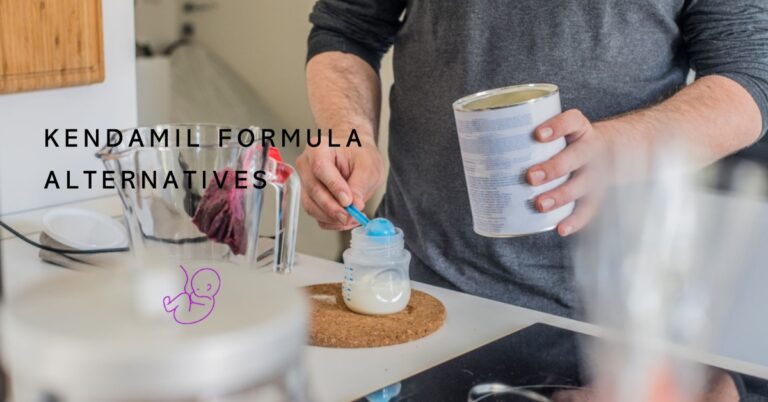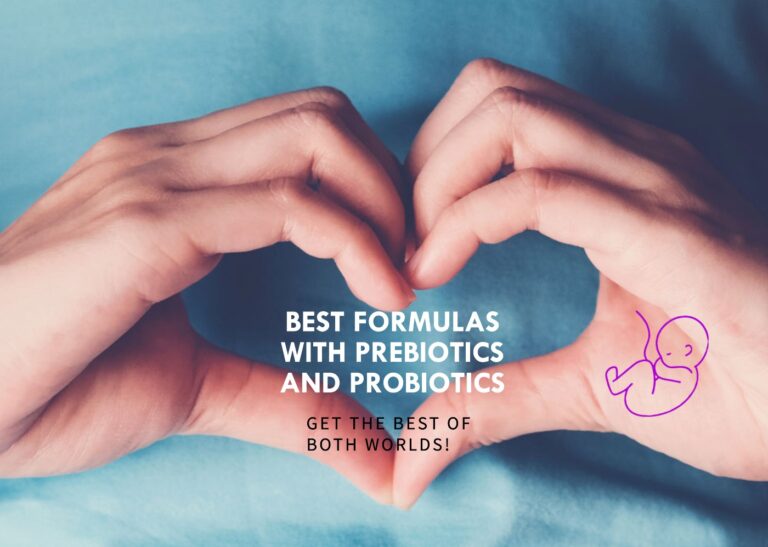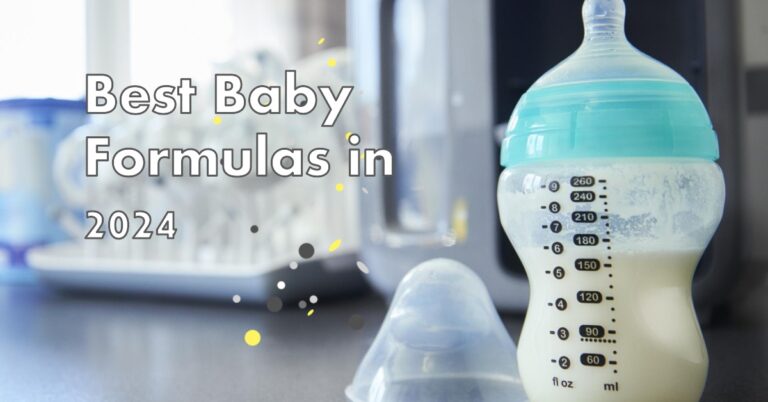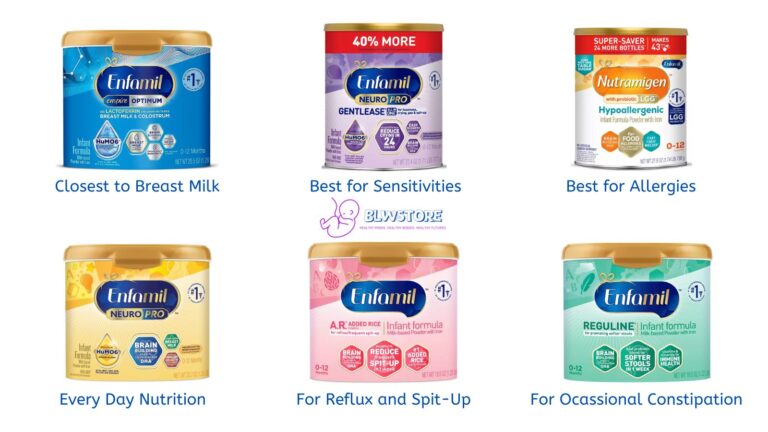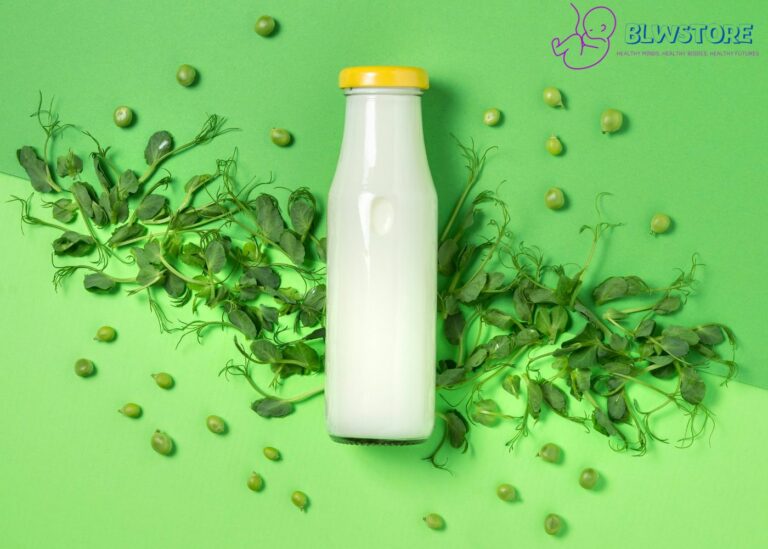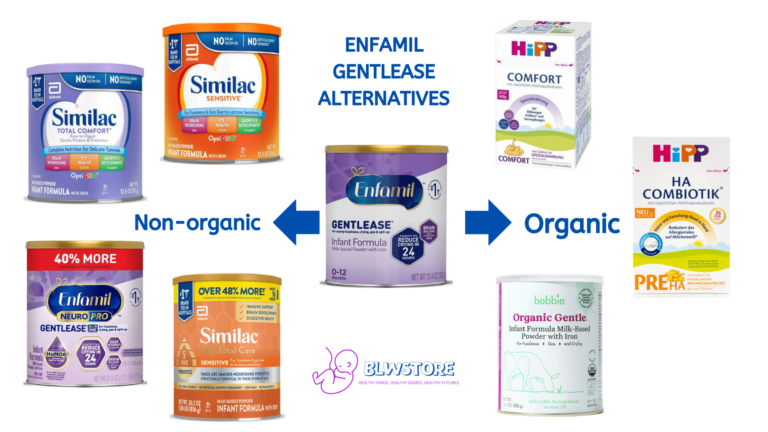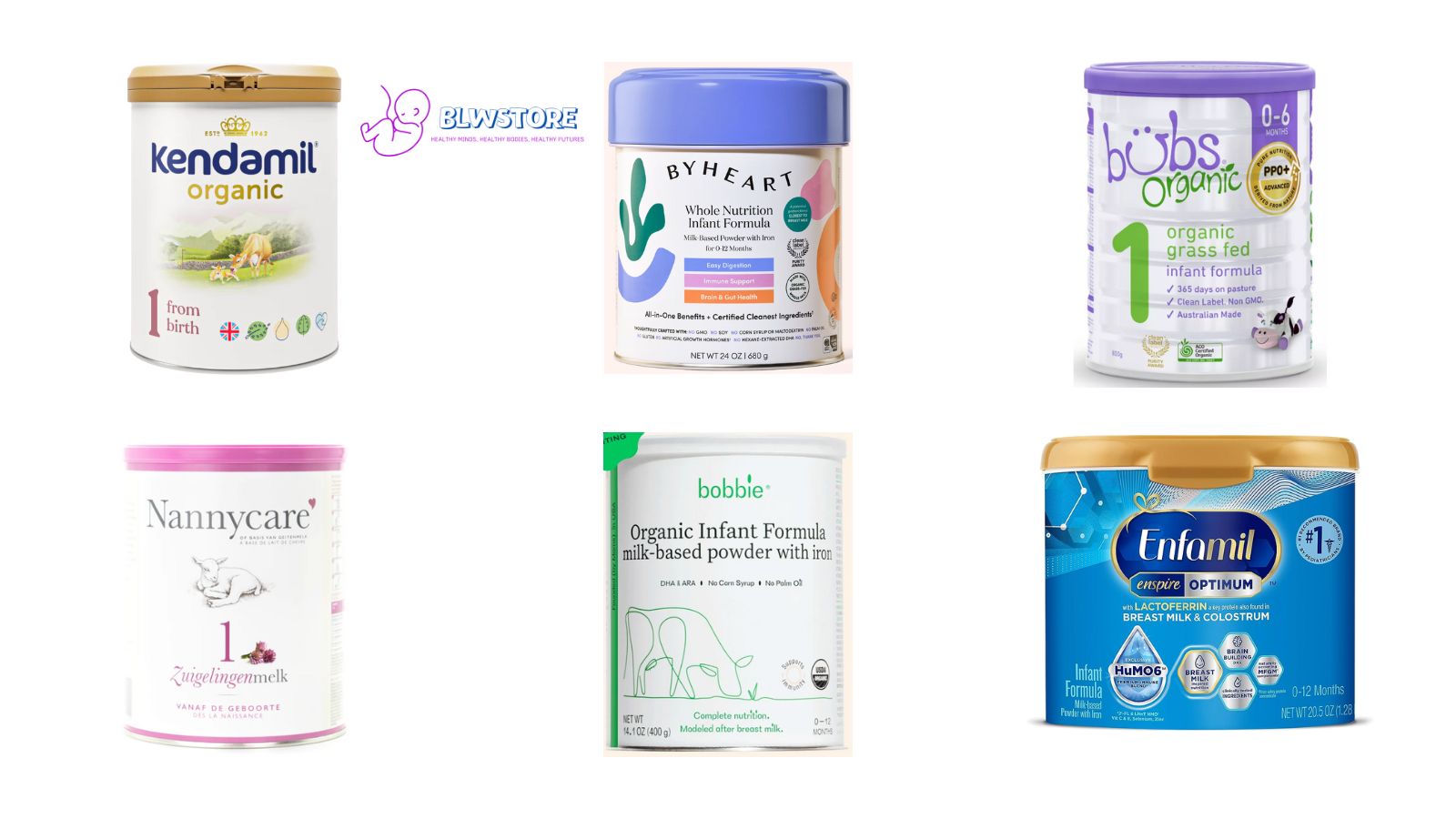
After writing hundreds of articles about formulas and comparing many others, we decided to compile the baby formulas that are the closest to breast milk.
We have considered their purity, ingredients and their sources, and nutritional composition in order to select the ones most similar to mother’s milk.
Let’s get after it!
*We have not included any “buy here or purchase links” since we want this information to be as transparent and wholesome as possible. We are not trying to sell you anything. We want to help, for real.
Related read: Best Baby Formulas of 2024 | Best Organic Formulas
Our Formula Podium: The Three Best
For a quick answer, here are the top 3 formulas closest to breastmilk we found for 2024.
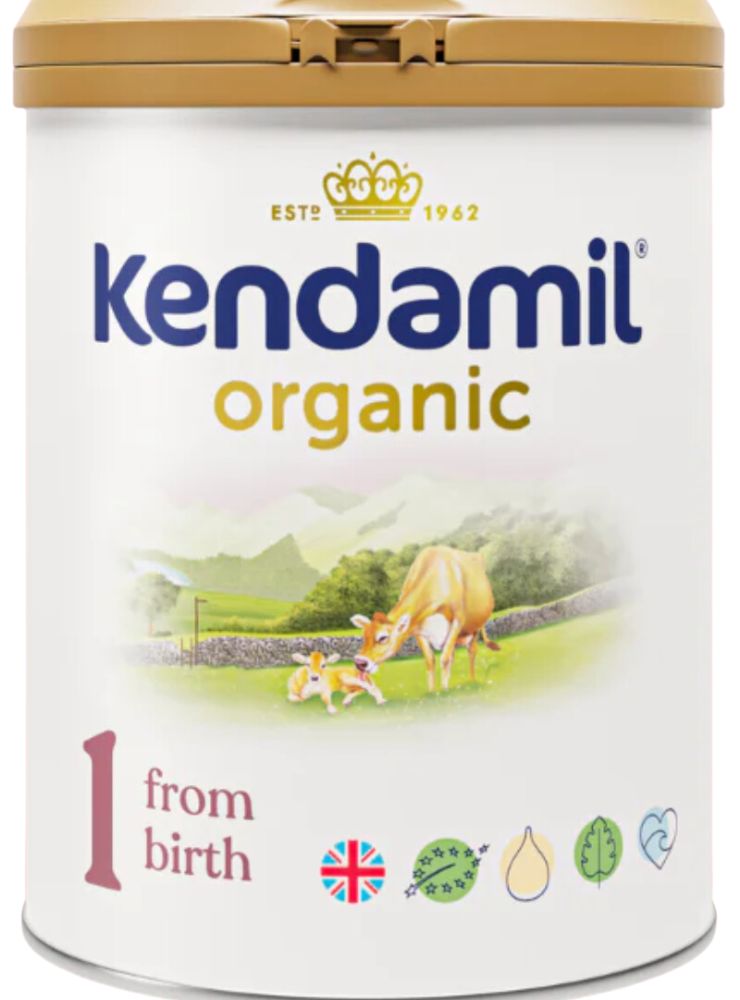
Closest to Mother’s Milk: Kendamil Organic
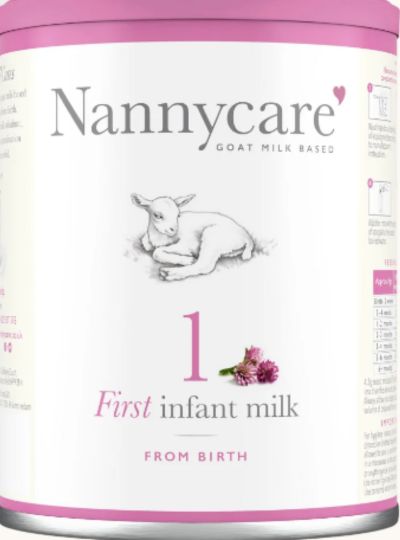
Closest to Breast Milk Goat Formula: Nannycare
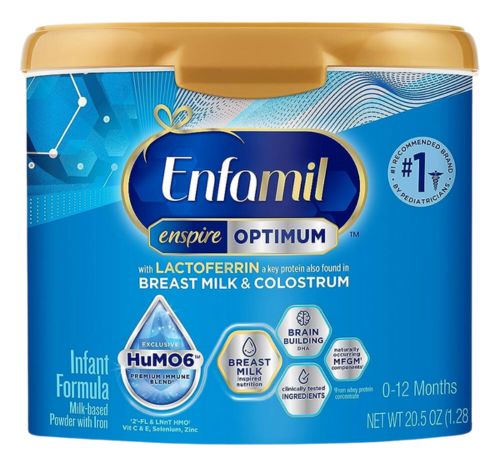
Best Non-Organic: Enfamil Enspire
What Makes Breast Milk the Best Food for Babies?
- Human Milk Oligosaccharides (HMOs): These complex sugars play a crucial role in developing the infant’s gut microbiota and immune system. One of the most studied HMOs is 2′-fucosyllactose (2′-FL), added to some formulas recently. However, breast milk contains more than 200 types of HMOs, and replicating this diversity in formula is challenging.
- Dynamic Composition: The composition of breast milk changes over time to meet the evolving needs of the growing infant. For example, colostrum, the first milk produced after birth, is low in fat but high in protein and immune-protective components. This dynamic adaptation to the baby’s needs is difficult to replicate in a static product-like formula.
- Immune Factors: Breast milk contains antibodies and other immune factors that provide the infant with passive immunity, protecting them against infections. While some immune components can be added to formulas, the full range of immune protection offered by breast milk is not yet achievable in formulas.
- Microbiome: Breast milk contains a variety of beneficial bacteria that help establish the infant’s gut microbiota, which is crucial for their immune system and metabolic health. Replicating this microbiome in formula is currently not possible.
- Bioactive Molecules: Breast milk contains hormones, growth factors, and other bioactive molecules that play various roles in infant development. These components are not typically found in formulas.
- Better Absorption: The nutrients in breast milk, such as carbohydrates and proteins, are better absorbed and used by the baby than formula.
How We Chose the Formulas in This Article
Based on what mother’s milk provides, here’s the list of our criteria for choosing the formulas in this post:
- Lactose Only (No Extra Carbs): We prioritize formulas that use lactose as the primary carbohydrate, avoiding those with additional, unnecessary carbs. Check out this article if you need a formula without lactose or low lactose content.
- Whole Milk Over Skimmed Milk: We favor formulas made with whole milk. This choice reflects the richness and nutritional completeness found in full-fat milk, relying less on vegetable oils.
- Inclusion of HMOS and MFGM: Human Milk Oligosaccharides (HMOS) and Milk Fat Globule Membrane (MFGM) in formulas is crucial.
- Organic Ingredients: Our selection leans heavily towards formulas with organic ingredients.
- Avoidance of Palm Oil: We avoid formulas containing palm oil. This preference is due to concerns about its impact on calcium absorption and overall health implications (unless it’s organic).
- Addition of DHA and ARA: We ensure that the formulas include DHA (Docosahexaenoic Acid) and ARA (Arachidonic Acid).
- Addition of GOS (Galactooligosaccharides): We look for formulas that contain GOS, a prebiotic that aids in digestive health and closely resembles the function of natural prebiotics in breast milk.
- Use of Coconut Oil: We prefer formulas that incorporate coconut oil, known for its easy digestibility and healthy fat content.
Key Differences Between the Formulas in this Article
| FORMULA | ORGANIC | PREBIOTICS | PROBIOTICS | HMOs | MFGM |
|---|---|---|---|---|---|
| BOBBIE | ✅ | ❌ | ❌ | ❌ | ❌ |
| KENDAMIL ORGANIC | ✅ | ✅ | ❌ | ✅ | ✅ |
| BYHEART | ✅ | ✅ | ❌ | ❌ | ❌ |
| NANNYCARE | ❌ | ❌ | ❌ | ❌ | ✅ |
| SIMILAC PURE BLISS | ❌ | ✅ | ❌ | ❌ | ❌ |
| ENFAMIL ENSPIRE | ❌ | ✅ | ❌ | ✅ | ✅ |
What are the Closest Formulas to Breast Milk?
1. Kendamil Organic

$53 per 800gr on average
A pure and wholesome formula that takes nature’s cue, offering nutrients mirroring mother’s milk.
Why we chose it.
We chose Kendamil Organic because it’s a natural choice for infant nutrition.
The formula uses whole cream milk to provide a richness similar to breast milk and relies less on vegetable oils. It adds HMOs and MFGM (Milk Fat Globule Membrane), making it the closest formula to breast milk.
Kendamil is environmentally conscious and doesn’t use palm oil, sourcing ingredients from UK family farms. It is vegetarian-friendly using marine algae to provide DHA and ARA.
Kendamil Organic contains no artificial ingredients and is carefully balanced to provide wholesome nutrition.
Pros
- Mimics breast milk nutrients for optimal infant development
- Organic, local ingredients without harmful additives
- Vegetarian-friendly with plant-based DHA and ARA
- Environmentally responsible and palm oil-free
Cons
- Not suitable for babies with specific milk protein allergies or lactose sensitivities
2. Nannycare

$66 per 900gr on average
Organic goat milk-based formula from New Zealand, perfect for tiny tummies.
Why we chose it.
We chose NannyCare because it represents a natural formula that simplifies the feeding process. Made from whole goat milk, it’s admired in the UK for its high quality and commitment to organic ingredients.
Its farming methods prioritize the well-being of goats, ensuring they’re raised and milked humanely to produce the best milk.
The formula is designed with your little one’s digestive comfort in mind, creating softer curds that are gentler on tiny tummies.
Moreover, NannyCare has stood the test of time for over 30 years, becoming a preferred choice for parents who value purity and simplicity in their baby’s nutrition.
Pros
- Organic and simple ingredient list
- Renowned for high quality and brand reputation in the UK
- Easier digestion due to softer milk curds
- Whole milk and MFGM
Cons
- Does not contain prebiotics or probiotics
- Slightly more expensive than some other brands
3. Bobbie
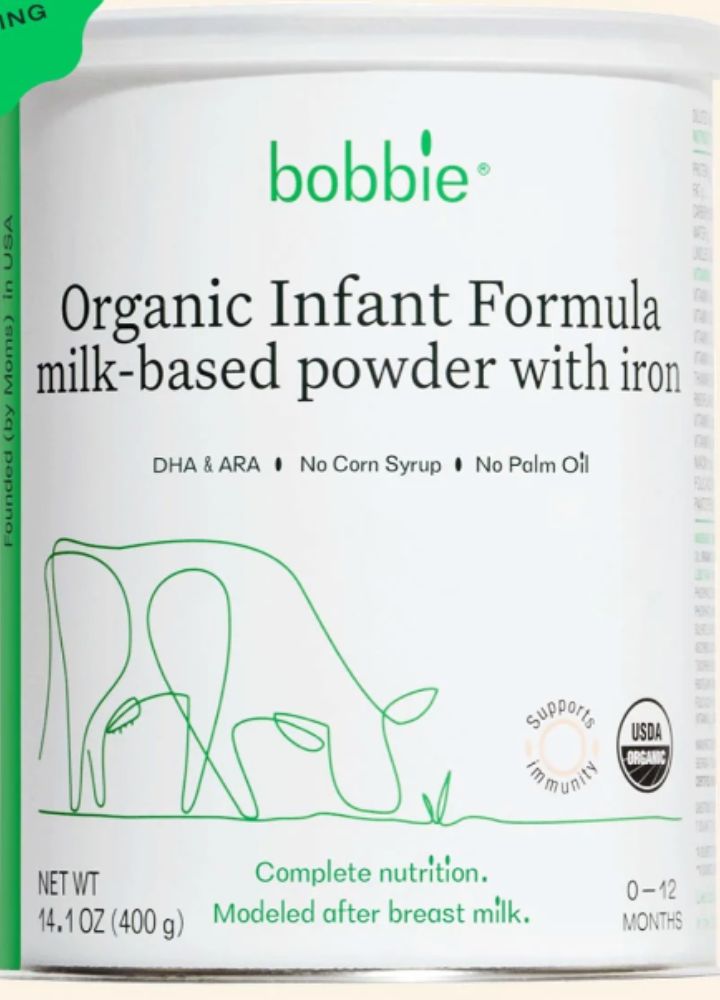
$46 per 800gr on average
Bobbie is a USDA Organic infant formula that mimics breast milk’s nutritional balance, emphasizing quality ingredients and digestion-friendly protein ratios.
Why we chose it.
We chose Bobbie for its commitment to organic, high-quality ingredients and a nutritional profile that closely emulates breast milk.
It’s crafted in the USA, adhering to both FDA and EU standards, focusing on simple components without unnecessary additives.
Bobbie’s formula is designed to provide easy digestion and essential nutrients like DHA without syrups, maltodextrin, or palm oil.
Parents looking for an organic option with transparent practices will appreciate Bobbie’s Clean Label Project award and pesticide-free certification—testaments to its purity and care for infants’ health.
Pros
- Organic and simple ingredients list
- Mimics breast milk for optimally balanced nutrition
- Excludes palm oil, favoring better nutrient absorption
Cons
- It does not contain prebiotics or probiotics
- It does not include HMOs or MFGM
4. Byheart
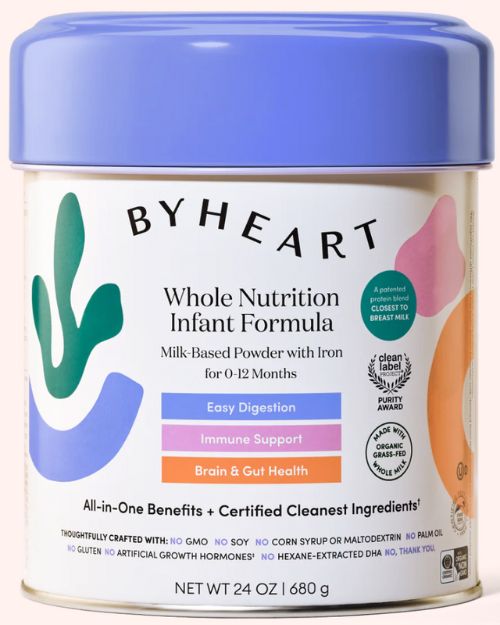
$42 per 680gr on average
ByHeart is a newer infant formula brand centered on quality, transparency, and whole nutrition with a protein blend close to breast milk and essential fatty acids.
Why we chose it.
Choosing ByHeart signifies a preference for a fresh approach to baby nutrition without skimp on quality.
The formula stands out for its balanced protein profile, mimicking breast milk’s beneficial properties, and is meticulously crafted with non-GMO and organic components.
Recognizing the profound impact of early dietary foundations, ByHeart includes prebiotics and probiotics to foster a thriving infant gut biome, which is critical for immunity and digestion.
The brand upholds transparency and high manufacturing standards, making it an admirable choice for conscientious parents.
Pros
- Supports baby’s gut health with prebiotics and probiotics
- Features essential fatty acids DHA and ARA for cognitive and eye development
Cons
- It does not have HMOs or MFGM
5. Aussie Bubs
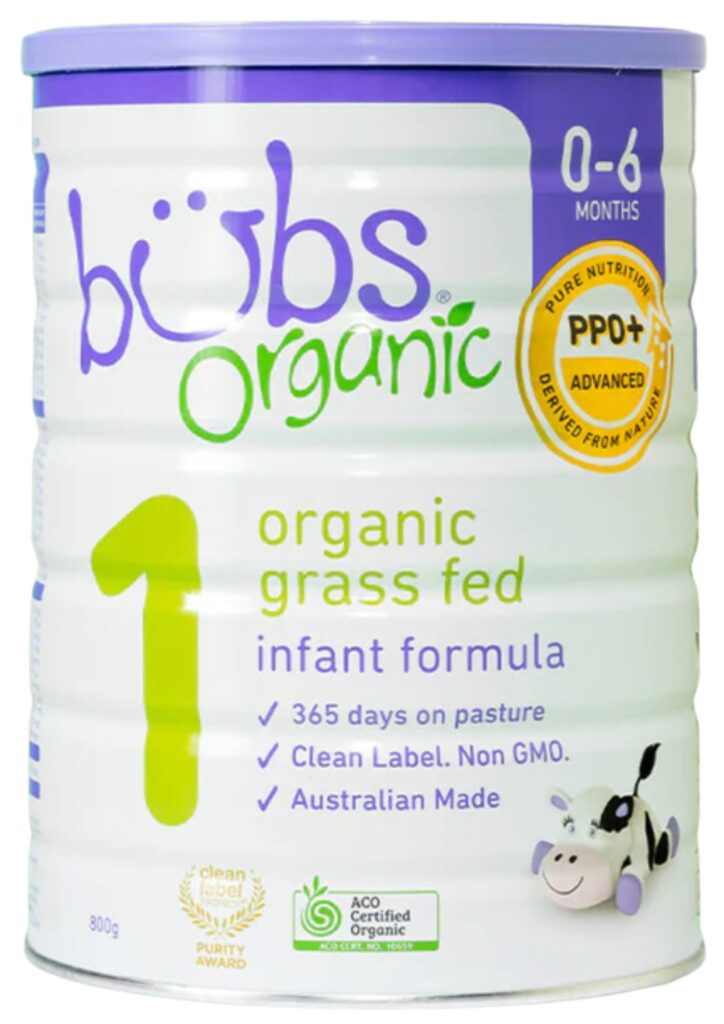
$40 per 800gr on average
Aussie Bubs is an Australian brand offering an organic, grass-fed formula enriched with essential nutrients, prebiotics, and probiotics for a balanced diet.
Why we chose it.
This brand advocates for natural, eco-friendly nutrition, supporting local farmers and providing clean, organic sustenance to babies.
The formula’s organic, grass-fed whole milk is the foundation for a nutrient-rich profile aligned with a lactation-inspired protein balance.
The thoughtful addition of prebiotics and probiotics offers support for your baby’s digestive and immune system, setting Aussie Bubs apart with its wholesome approach to infant nourishment while maintaining essential fatty acids and an affordable price point.
Pros
- Grass-fed organic milk embraces sustainability and purity
- Balanced protein ratio suitable for infant digestion
- Enriched with gut-friendly prebiotics and probiotics
- Very good price point
Cons
- No MFGM or HMOs
6. Enfamil Enspire

$47 per 800gr on average
Enfamil Enspire touts an advanced formula designed to closely replicate breast milk, featuring key components such as MFGM, Lactoferrin, and a preferred source of DHA.
Why we chose it.
Enfamil Enspire mirrors breast milk with elements like MFGM and Lactoferrin, which are known to benefit mental development and immunity.
Its physiological harmony is articulated through an optimal whey-to-casein protein ratio, rendering it a remarkable emulation of a mother’s milk.
The inclusion of dual prebiotics bolsters the gut health premise, melding harmoniously with DHA sourced from Schizochytrium sp. oil for superior bioavailability—outlining a nourishment blueprint that’s as close to nature’s design as possible, without GMOs, artificial growth hormones, and sustainably sourced ingredients.
Pros
- Designed with breast milk-like protein composition
- Fortified with essential ingredients for brain development
- Non-GMO and free from artificial growth hormones
Cons
- Includes palm olein
- Non-organic
7. Similac Pure Bliss
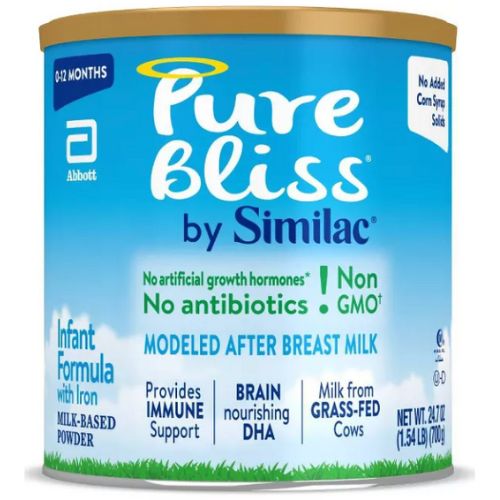
$47 per 800gr on average
Similac Pure Bliss is crafted from milk of grass-fed cows, emphasizing natural ingredients without palm olein, artificial hormones, GMOs, and a more native breast milk emulation.
Why we chose it.
Similac Pure Bliss is made simple and natural. It uses milk from grass-fed cows and doesn’t include palm olein, which can block nutrient absorption. There are no artificial hormones, supporting natural growth.
This formula is designed to be gentle on baby’s stomach, with prebiotics for gut health and easily digestible proteins. It’s also non-GMO.
This formula brings the quality of Irish farms right to your baby’s bottle. The milk comes from cows that graze freely, making it healthy and natural.
While it may cost a bit more, and the protein mix is slightly different from breast milk, it’s a great choice for those who prefer natural, earth-friendly products.
Pros
- Derived from high-quality milk of free-range cows
- Promotes healthy digestion with prebiotics
- Free from artificial growth hormones and palm olein
Cons
- Whey-to-casein ratio is less than the ideal
- Non-organic
- No MFGM or HMOs
Last Words
We hope this article on the closest formulas to breast milk helps you find one that suits your baby.
Remember, formula feeding is the second best choice for your baby, and finding the best option often requires some tries.
If you have any questions, please comment below or contact us, and we’ll be happy to help you.
We’re Maria and Alberto, a married couple and educators who are nutrition enthusiasts. Even before we had kids, we were already crazy about nutrition.
We’d read scientific articles, watch videos from nutritionists, and spend hours listening to nutrition podcasts.
Today, we continue doing this, but in a different way, as we’ve learned to sift through the noise and trends. Nutrition, like any other field of knowledge, the more you read and learn, the more you develop a comprehensive understanding of reality, and that’s what has happened to us.
Before having our first child, we focused on learning everything we could about child nutrition, using the same techniques we had already employed, backed by our extensive knowledge in nutrition.
Our mission is to help other parents with their children’s nutrition, to help them become the best versions of themselves.
If we are what we eat and drink, which is absolutely true, let’s do it right!


